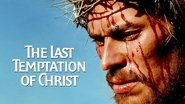David Carey
IMDb STORYLINE: "The carpenter, Jesus of Nazareth, tormented by the temptations of demons, the guilt of making crosses for the Romans, pity for men and the world, and the constant call of God, sets out to find what God wills for Him. But as His mission nears fulfillment, He must face the greatest temptation; the normal life of a good man. Based, not on the Gospels, but on Nikos Kazantzakis' novel of the same name." Written by Nick Lopez (
[email protected])"He must face the greatest temptation; the normal life of a good man." But is it the life of a "good" man? The temptation is so powerful because it is presented so attractively. In his fantasy- temptation, the make-believe Jesus sees himself in ripe old age surrounded by many women and children, having fallen for the misogynistic lie "There is only one woman in the world.": In his imagination, he betrays his pregnant wife Magdalene, the woman who has loved him since girlhood, by simultaneously impregnating Mary of Bethany. He goes on to imagine that he sleeps with her sister Martha in Mary's absence. But most obviously, he is tempted to betray his best friend, his close disciples, his other followers, the trusting crowds of Jerusalem, to turn his back on them, to walk away into a lush Eden-like landscape, to escape and hide. At last, this imaginary life of a "good" man is dramatically revealed as a temptation when his guardian "angel of light" dissolves in a flare of Satanic flame. So the real Jesus rejects this temptation once he sees through it. He remains to die on the cross.





